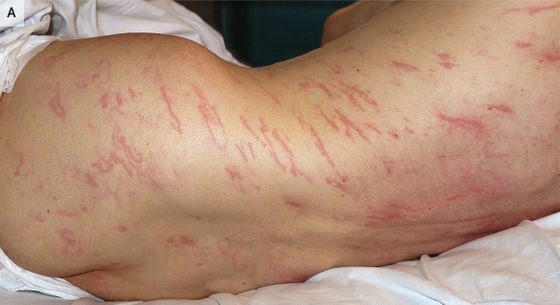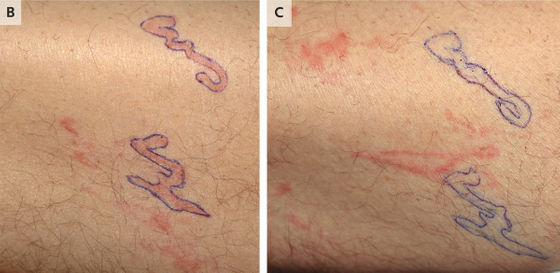'A large number of parasitic nematodes that invade from the buttocks and move under the skin of the whole body' are reported

A Spanish doctor reported a case in which 'a large number of parasitic nematodes invaded from the buttocks, moved under the skin and spread throughout the body.'
Larva Currens in Strongyloides Hyperinfection Syndrome | NEJM
Army of worm larvae hatch from man's bum, visibly slither under his skin | Ars Technica
https://arstechnica.com/science/2022/04/army-of-worm-larvae-hatch-from-mans-bum-visibly-slither-under-his-skin/
The case in question concerns a nematode called Strongyloides stercoralis , reported by Mario Puerta-Peña et al. Of Spain in the New England Journal of Medicine, a peer-reviewed medical journal. Strongyloides stercoralis breaks through the skin of organisms that come into contact with soil and sewage contaminated during the larval period, invades the body, and travels to the lungs via the heart through the bloodstream and lymphatic flow. Then, it moves from the alveoli up the trachea to the mouth, and from there it moves to the intestine in the form of being swallowed by the infected person. The ecology of this nematode is that it grows and propagates in the intestine, goes out of the body with feces, and spreads the infection.

This time, a rare case was reported in which Strongyloides stercoralis, which went out with feces, 're-invaded' from the skin around the anus. The patient was a 64-year-old sewage worker who had previously been diagnosed with metastatic lung cancer and was given a hormone therapy drug for cancer after being infected with Strongyloides stercolaris, resulting in an immune response. It is thought that the internal environment in which Strongyloides stercoralis can easily reproduce has been established by being suppressed.
Below is an image of the actual patient. It is said that the red part is a Strongyloides stercolaris that moves under the skin, but since it seems that the Strongyloides stercolaris is accompanied by itching, it is thought that the scars scratched by the patient are also mixed.

Puerta-Peña et al. Made the subcutaneous Strongyloides stercolaris easy to understand with a pen. The Strongyloides stercolaris shown in the left and right images are the same individual, and it is said that they moved from the position of the image on the left to the position of the image on the right in 24 hours.

According to reports, Puerta-Peña et al. Judging that it was a parasite because the red eczema had moved, and confirmed the diagnosis by confirming the larvae of Strongyloides stercolaris by stool test. In response to this diagnosis, Puerta-Peña and colleagues administered the antiparasitic drug ivermectin to the patient to treat the rash and diarrhea.
Related Posts:







